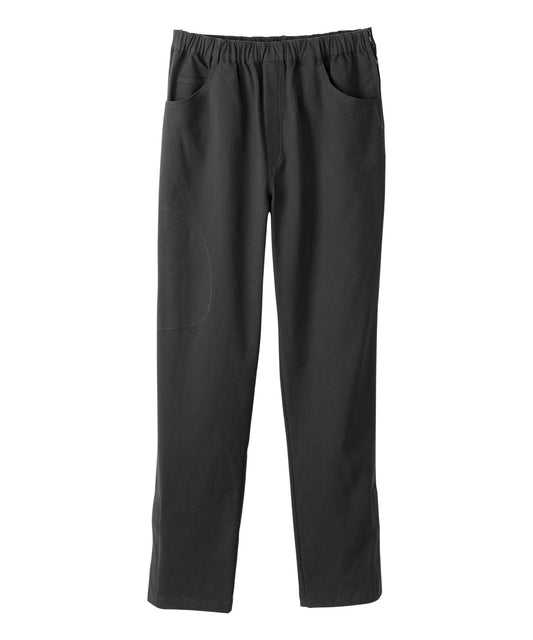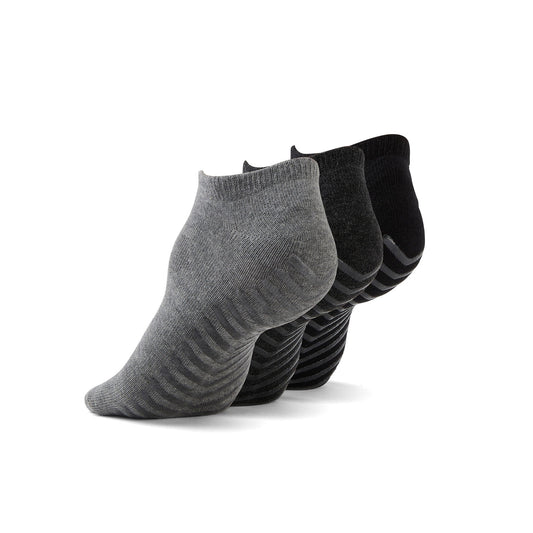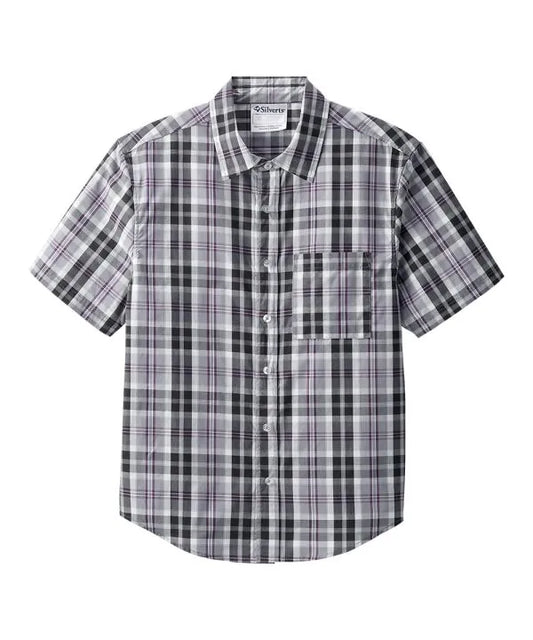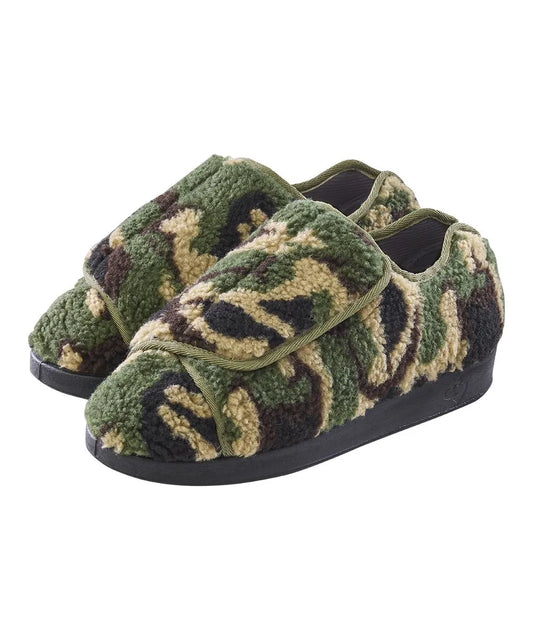Written Tara Chen by & reviewed by Nicole Fernandes
Parkinson’s disease is a neurodegenerative disorder that affects millions of individuals around the world. It is one of the most common brain conditions affecting motor control and it impacts the region of the brain, called the basal ganglia, that controls body movements.
Parkinson’s is most often found in individuals older than 60 years of age and often results in difficulties with walking, maintaining balance, and moving. It also causes tremors, stiffness, poor posture, and more. One of the common challenges faced by individuals with Parkinson's is difficulty in dressing independently due to motor impairments and reduced dexterity.
However, advancements in adaptive clothing have provided innovative solutions to make dressing easier and more comfortable for Parkinson's patients. In this blog post, we will explore various clothing solutions designed specifically to address the unique needs of Parkinson's patients, which will help them maintain their independence and freedom.
1. Velcro and magnetic closures
In typical clothing, there are a lot of zippers and buttons in place to fasten up a jacket or pair of pants. Shoelaces are also in nearly every pair of footwear. Unfortunately, these types of closures tend to be difficult for individuals with Parkinson’s to use due to the detailed motor coordination required.
To simplify the process of getting dressed, adaptive clothing often incorporates Velcro and magnetic closures. These features allow patients with Parkinson’s to secure their clothing and alter the fit of the garment quickly and easily. Velcro is secure and adjustable, allowing individuals to fasten clothing with greater ease. Magnetic closures tend to replace the location of buttons and are embedded in the fabric. For instance, June Adaptive has a Women’s Fleece Cardigan with Magnetic Button that is both stylish and easy to wear. It has a relaxed fit, is made from a comfortable material, and comes in three different colours.

Women’s Fleece Cardigan with Magnetic Button
These closures are not only convenient for individuals with Parkinson's but also beneficial for those with arthritis or other conditions that affect hand mobility. The ease of use and adjustability of Velcro and magnetic closures help individuals with Parkinson's dress and undress independently, which promotes their self-confidence and reduces frustration.
2. Elastic waistbands and adaptive pants
Another clothing difficulty for individuals with Parkinson’s is putting on pants and skirts. Almost every pair of pants has a zipper and button mechanism to secure it onto the waist. Skirts are also no exception. However, adaptive clothing incorporates elastic waistbands so that the traditional complicated closures are not needed. Individuals can simply slide the garment onto their waist, and the elastic will stretch to accommodate their size. This type of feature also provides flexibility and comfort, as well as helps individuals with Parkinson’s maintain independence when dressing. For example, June Adaptive offers Men’s Cotton Pants with Elastic Waist in seven sizes and three colours. It incorporates internal pull-up loops, a drawstring to cinch the pants, and is made of a soft cotton twill fabric for extra comfort.

Alternatively, some adaptive pants still incorporate zippers for more secure fastening, but they are located in different locations of the garment. Adaptive pants are designed with open-back or side-zippered features, allowing Parkinson's patients to dress with minimal effort and reduced strain on their motor skills. Open-back pants allow for easier dressing from a seated position, eliminating the need to stand or bend. On the other hand, side-zippered pants allow individuals with Parkinson’s the ability to step into the pants and then zip them up from the side, which reduces the effort needed to get dressed. For example, June Adaptive offers Men’s Pants with Side zippers in six sizes and four colours. It has pull-up loops, side zippers, and Velcro leg openings, and is made of cotton and spandex. Overall, these adaptive designs enable individuals to maintain their independence, while ensuring comfort and style.

3. Front-closing bras and magnetic fasteners
Bras are usually clasped in the back with two to three metal hooks, which can take some practice getting used to for individuals even without motor difficulties. These types of garments are necessary for the majority of women but are especially challenging for those with Parkinson’s and may often cause frustration.
However, adaptive clothing includes front-closing bras and magnetic fasteners that can minimize the frustration of putting on and taking off a bra. Front-closing bras have easy-to-use hooks or clasps located at the front of the garment. This simplifies the process of putting on and taking off bras. They also eliminate the need to reach behind the back or maneuver small hooks, making it more manageable for individuals with limited arm mobility or dexterity.
If hooks located at the front of the bra still pose a challenge, there are also some bras with magnetic fasteners. The magnets are often located on the front of the bra and securely hold the front panels together. They are convenient and reduce the need to use fine motor skills to manipulate small hooks. Overall, incorporating front-closing bras and magnetic fasteners into the wardrobe of women with Parkinson’s can help with the process of dressing and promote independence, while providing comfort.
4. Adaptive shoes and slip-ons
Shoes can be complex with the need to bend down and tie laces. This is a skill that takes several tries and practises for young children to master. It involves detailed motor movements to create a secure bow for the shoelace, and may sometimes unravel outdoors, which causes further frustration. This feature of traditional shoes is especially difficult for individuals with Parkinson’s who tend to have issues with motor movements and balance.
Fortunately, adaptive footwear provides practical solutions to overcome these challenges and minimize frustration. For instance, there are adaptive shoes with hook-and-loop closures, also known as Velcro shoes, that offer a convenient alternative to traditional laces. The straps of the Velcro can be easily adjusted and fastened, providing a secure fit without the need for manual tying.
Additionally, elastic laces are another option for individuals with Parkinson’s. Elastic laces transform regular lace-up shoes into slip-ons, which also eliminates the need for tying shoelaces. They allow the individual to slide their feet in and out of shoes with ease, saving time and effort while ensuring proper fit and support. Moreover, instead of throwing away functional traditional shoes, the non-elastic laces can simply be swapped out with elastic laces.
Moreover, other types of slip-on shoes, such as loafers or sneakers with stretchable openings, are also beneficial. These shoes provide a hassle-free dressing experience without compromising style or comfort. Overall, adaptive shoe options allow patients with Parkinson's the opportunity to maintain their independence and mobility, while ensuring the safety and convenience of footwear.
5. Anti-tremor garments
Parkinson's disease often leads to uncontrollable tremors, which can make dressing difficult, frustrating, and time-consuming. Luckily, there are anti-tremor garments available, which are designed to reduce the impact of tremors and provide stability while dressing. These garments have built-in stabilizing elements, such as strategically placed weights or compression panels, which counteract the tremor movements.
The effectiveness of anti-tremor garments is dependent on their ability to minimize involuntary movements and enhance precision during the dressing process. These specialized garments not only promote independence but also reduce the time and effort required for dressing, which allows individuals with Parkinson's to maintain their personal style and confidence. Overall, by stabilizing the affected limbs, anti-tremor garments allow Parkinson's patients to dress with improved control and reduced frustration.
6. Seated dressing aids
Some individuals with Parkinson’s have difficulty balancing, which makes it hard for them to perform certain dressing movements such as putting on shoes, wearing socks, and putting on pants. Luckily, seated dressing aids are available for individuals with Parkinson's who may have difficulty maintaining balance or standing for long periods of time.
These aids include dressing sticks, socks aid, and long-handled shoe horns. Dressing sticks help with pushing, pulling, or manipulating clothing items. Sock aids work by holding the sock open so that the individual can slide their foot into the opening with ease. This helps the individual become more independent and minimizes the need to bend over. Also, long-handled shoe horns help with putting on shoes without excessive bending or stretching, which helps the individual with Parkinson’s maintain their balance more easily. Overall, these types of aids promote self-reliance and minimize the need for assistance during the dressing process. Seated dressing aids not only alleviate physical strain but also enhance safety and comfort during dressing. They empower individuals with Parkinson's to dress while seated, reducing the risk of falls or injury and preserving their independence.
Individuals with Parkinson’s have several challenges when it comes to dressing and may be limited due to their motor difficulties and balance issues. This can be frustrating for them and may cause them to lose their independence. Thankfully, several adaptive clothing solutions are available to help individuals with Parkinson’s maintain their independence and comfort. From velcro and magnetic closures to elastic waistbands, adaptive footwear, and anti-tremor garments, there are various clothing options available to meet the unique needs of Parkinson's patients.
By embracing these innovative clothing solutions, individuals can overcome dressing challenges, and enhance their overall well-being. These clothing solutions not only simplify the dressing process but also empower individuals to express their personal style and preserve their independence in their daily routines.















